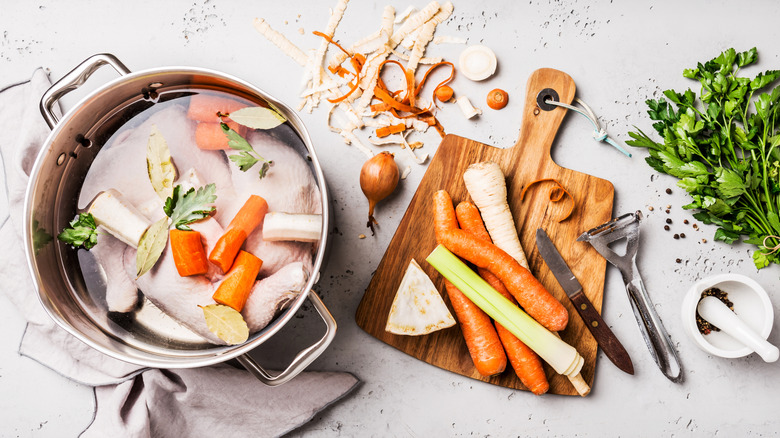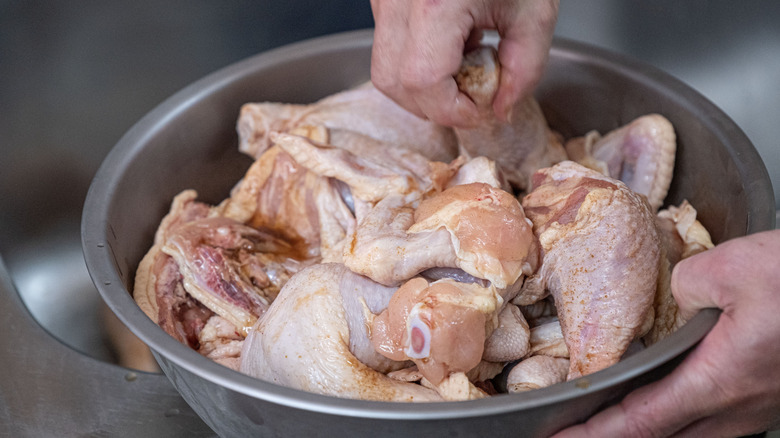The Liquid To Meat Ratio That Yields Perfect Chicken Stock
On its surface, homemade chicken stock is pretty straightforward: Throw whatever leftover bones and bits of meat you have into a pot of water, add remnant chunks of onion, parsley stems, and celery, bring to a boil, then simmer for several hours. It couldn't be easier. But make a few batches, and you'll find some come out flavorful and viscous while some are watery and bland. A number of factors impact the finished product, such as which cuts you're using, how much meat is on the bone, and how cooked everything is (or isn't) before it goes into the pot.
But one of the biggest factors is the ratio of water to chicken. Too much water and not enough meat and bones, and you end up with flavored water instead of a gelatin-rich stock. Too little, and you're not maximizing the amount of stock you can get. It turns out a minimum of 2 pounds of chicken per 2 quarts of water helps ensure you're getting the most flavor and structure while achieving the consistency and liquidness (it's a word!) you seek.
By the way, the USDA doesn't officially recognize a distinction between stock and broth for its food labeling rules, and you'll find the words used interchangeably. For this piece, we're going with the definition that stock is made with bones, collagen, and fat extraction, concentrated for use in other recipes.
The moisture protein ratio is a real thing
Chicken stock is a malleable creation born of practicality. Nearly every culture has some variation on a meat or vegetable stock or broth designed to maximize every available scrap of food, and tradition often dictates the recipe. Yet filling a pot with a leftover Costco rotisserie chicken carcass and topping it off with water works pretty well, too. Different chicken parts impact stock differently, affecting color, flavor, and viscosity. Wings are among the best options: affordable and packed with collagen-containing joints. However, the amount of water used affects the finished product as well.
The USDA uses the magic Moisture Protein Ratio (MPR) of 135:1 for commercial stocks and broths. Whether that's a minimum, maximum, or specific target ratio, it's very diluted, which is why store-bought stocks aren't particularly gelatinous and aren't great for creating espagnole (one of the five mother sauces) and demi-glace reductions.
When making your own, the water-to-chicken ratio is yours to control. Daniel Gritzer at Serious Eats ran a detailed analysis of stock-making variables and "found that you want at least two pounds of chicken per two quarts of water, a 1:2 ratio by weight," because more water dilutes the stock too much. But generally, the more chicken to water you have, the richer the stock will be. This is particularly true if you're working with cooked carcasses, where it's harder to extract the collagen. One carcass in a decent-sized stockpot is going to create flavored water. Pack them in there.

